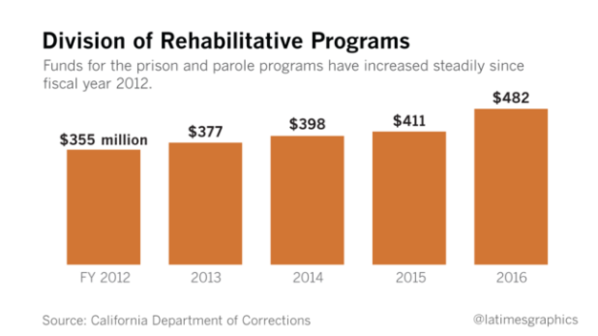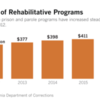Corrections officials said the growing emphasis on rehabilitation and helping offenders re-enter society has led to a prison culture shift. Inmates at facilities with the most opportunities seem less inclined to break the rules, officials said, showing a greater interest in group sessions, completing college applications and learning work skills.
California plans to release 9,500 offenders over the next four years under Proposition 57, part of the state’s strategy to comply with a federal court-ordered cap on the state inmate population. Gov. Jerry Brown has billed it as a thoughtful response to prison overcrowding. But to keep people from cycling in and out of the system, state officials say, prisons must prepare inmates for life on the outside.
State spending on prison rehabilitation programs — part of the California Department of Corrections and Rehabilitation budget, which is mostly supported by the state's general fund — has steadily grown over the last five fiscal years, from roughly $355 million in 2012 to nearly $482 million in 2016. Corrections officials say it’s producing positive outcomes. A 2016 state report found that the total three-year recidivism rate for all California felons — percentage of those who reoffend three years after their release — dropped to 44.6% from a peak of 67.5% in fiscal year 2010.
The ideas for programs can spring from community organizations, prison officials, legislation — even inmates themselves. All adult institutions, for example, offer associate of arts degrees in partnership with community colleges. Within some prisons, offenders can work on dairy farms, gardens or clothing factories. At the state prison in Chino, they learn the physics, medicine and mechanics behind deep sea diving, training with the aim of someday becoming commercial divers, underwater welders or heavy construction riggers.
To read more of Jazmine Ulloa's article, please click here.





Comments (0)